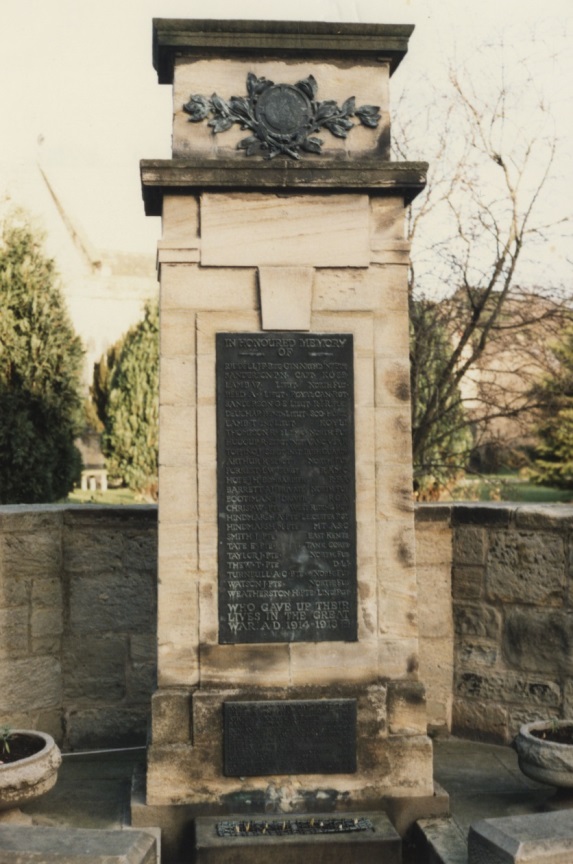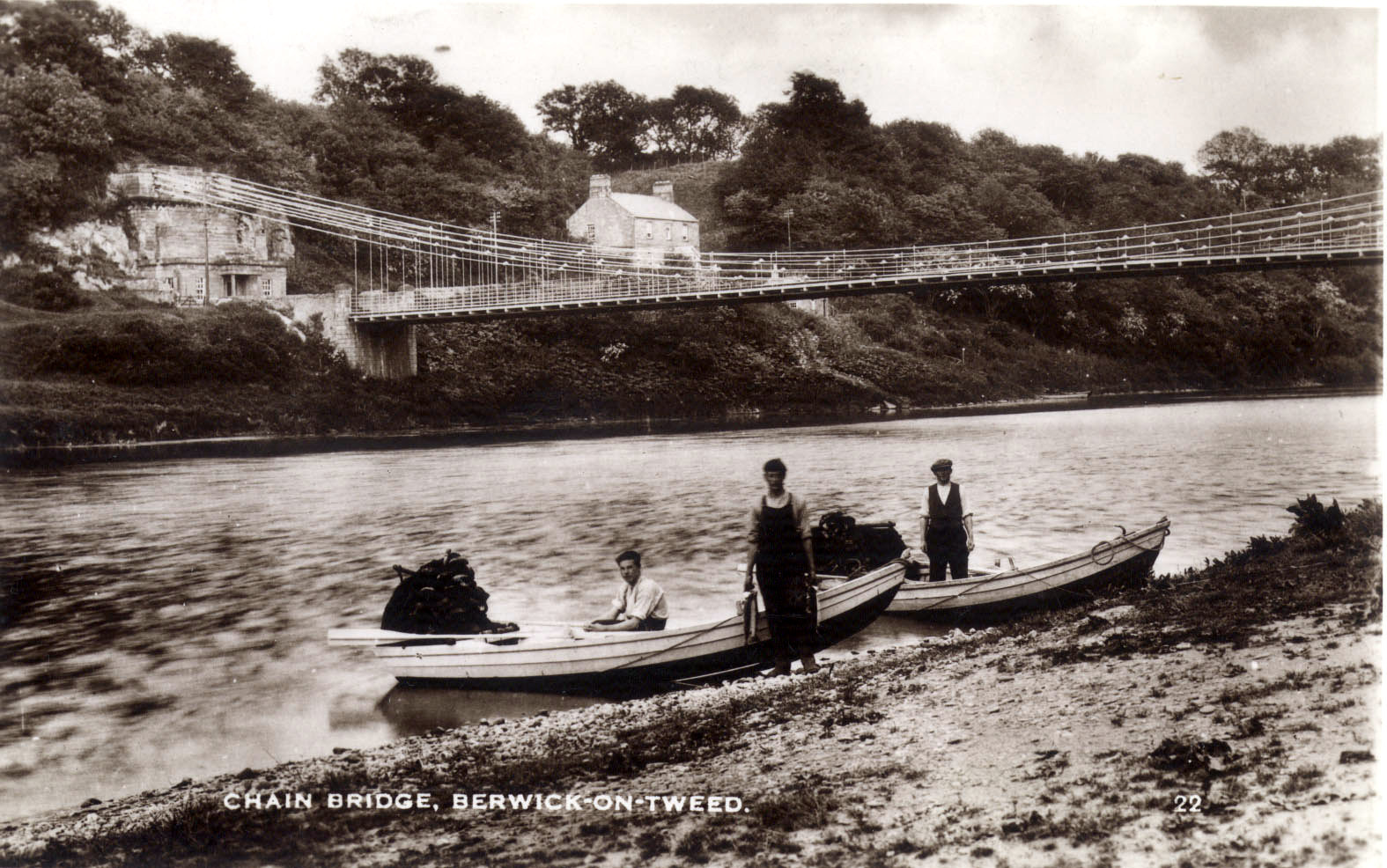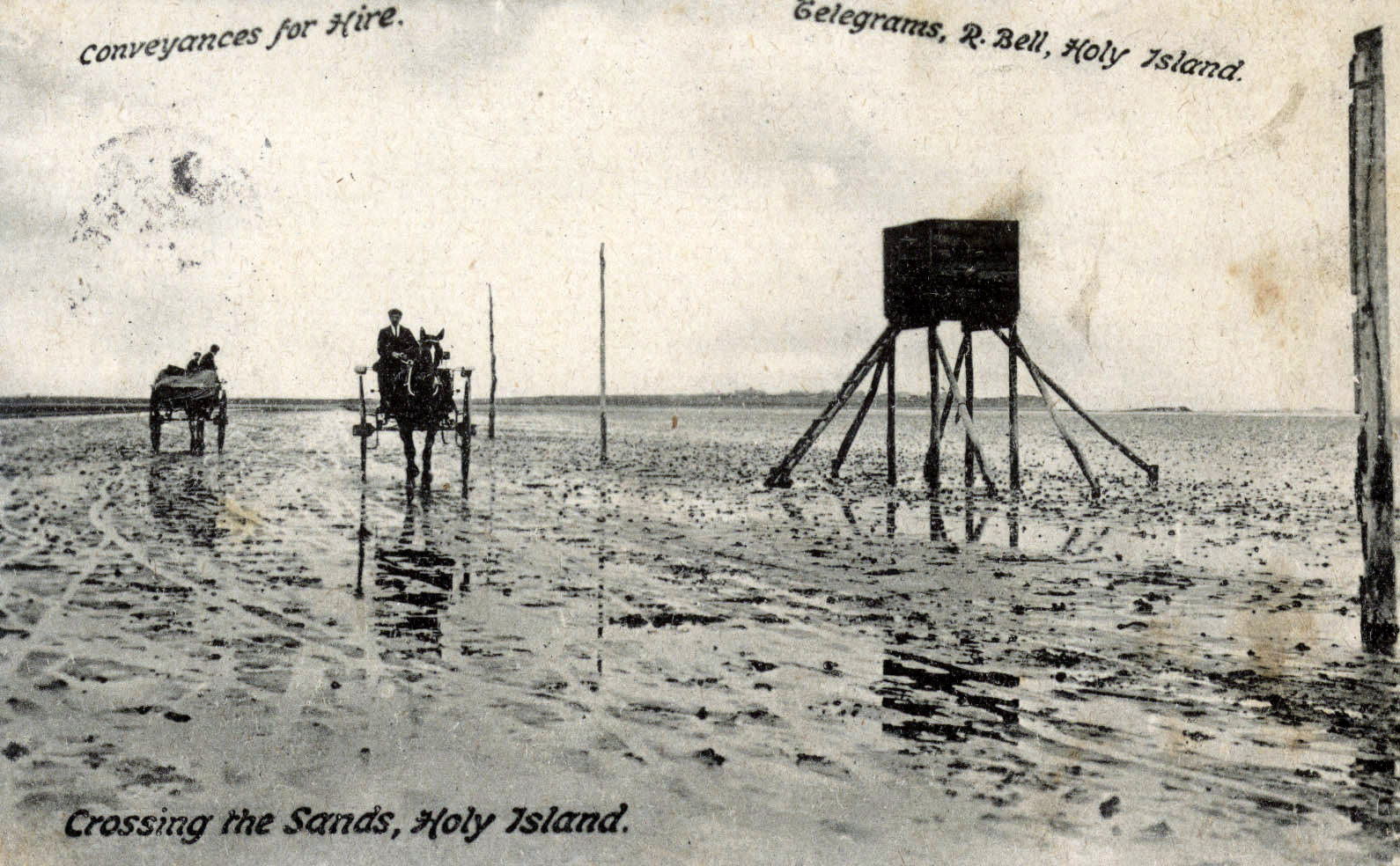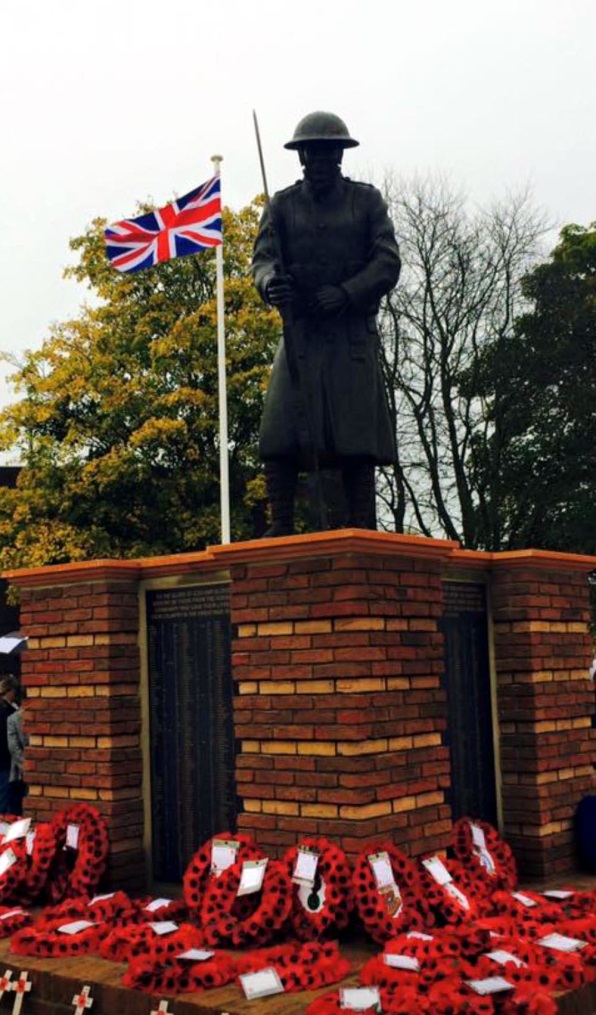Walter Lamb was born in Christon Bank, Alnwick, Northumberland on 15 February 1890, son of Mr James William (A Brewer in Brewery Lane Warkworth) and & Mrs Minnie Lamb of Hotspur House, Warkworth. He had five brothers – Henry, Thomas, James W, John, Cyril and two sisters – Elinor Elizabeth (who died in New Jersey, USA) and Minnie Florence. His brother John served with the Royal Navy during the First World War and survived. Walter was educated at the Dukes School, Alnwick, leaving school in 1906.
He was living in Newcastle in the 1911 census at 41 North Terrace, Wallsend as a boarder, his occupation was Engineers Pattern Maker with the North Eastern Marine Engineering Co. Ltd. Walter was 5ft 7½ inches tall with black hair and brown eyes. He was 24 years and 7 months of age when he enlisted into the Northumberland Hussars Yeomanry as a Private on the 18th September 1914 signing an agreement to serve for four years or the duration of the war. He only spent three months with the Northumberland Hussars before receiving a commission and joining ‘I’ company 22nd (Service) Battalion, Northumberland Fusiliers (3rd Tyneside Scottish) as Second Lieutenant.
His cousin 2nd Lieutenant Thomas Lamb was killed when instructing his men in hand grenade, throwing. An article appeared in the Newcastle Journal on 11th July 1916 with the heading:-
“Warkworth officer Killed in Action”
News was received yesterday by Councillor J.W. Lamb of Warkworth, that one of his sons, Lieutenant Walter Lamb had been killed in action in France. The deceased enlisted in the Northumberland Fusiliers and was connected with the machine gun section. At the meeting of Alnwick Rural Council, yesterday, Councillor J.H. Mansfield Chairman, referred to the loss sustained by one of their members, Councillor James W. Lamb, through the death of his third son Lieutenant W. Lamb who had been killed in action in France and also of his nephew 2nd Lieutenant Thomas Lamb, who had been killed in a bomb accident at Chipchase Camp. The deaths of these 2 young officers would be a great trial to Councillor J. W. Lamb and his sister Miss Elizabeth Lamb, also a member.
The War diaries for the 22nd Battalion show that they were in their billets on 24 June at Bresle and they were preparing for the attack to begin. On 25 June the companies/platoons began moving to the Usna-Tara Line and the Sunken Garden, Albert. On 29 June a bombing party consisting of 2 Officers and 20 men processed towards the enemy lines with a view of raiding them. This party returned to our lines early, due to enemy fire, without suffering any casualties.
The Battalion remained in position in their line on 30 June, supporting the 21st Battalion, Northumberland Fusiliers. The 20th & 23rd Battalions were in position on the left. By 22.30hours all the companies were in their assembly trenches awaiting the attack.The position of assembly points on the 30 June was as follows:
1st Line – along Dundee Avenue, left resting on point where Mercier Street joins.
2nd Line – Alnwick Street
3rd Line – along Dundee Avenue, with right resting on point where Mercier Street joins.
4th Line – were in the newly dug trench from junction of Buddon Street and Dundee Avenue.
At eight minutes before zero hour a ‘Hurricane Bombardment’ opened, then with two minutes before zero hour, two lines of the 2nd Tyneside Scottish advanced over the parapet and the 3rd Tyneside Scottish followed, occupying the trenches vacated by them. A Regiment Aid Post was established at the junction of Gowrie Street and Methuen Street. The wounded were to be evacuated by Gowrie Street and Perth Avenue to A.D.S of Kinfauns Street – Perth Avenue.
The attack began at 0730 hours and by 1245hours their strength was only 7 Officers and 200 Other Ranks, made up of a mixture of the 22nd & 21st Battalions Northumberland Fusiliers, under the command of Major Acklom. At 2215hours a patrol got in touch with other troops, who had taken shelter in the ‘New Crater’ which had been caused by our mines 100 yards beyond our right flank. By 2 July all ranks were greatly in need of water and were very fatigued, consolidation of the position continues, slowly. By 0330 hours the Cheshire’s arrived in our lines ready for a further advance. Orders were received at 1440hours to hold our position at ‘ALL COSTS’.
More troops arrived in our lines – Lincolns and Royal Welsh Fusiliers. In the next few hours the Battalion received two Lewis Guns, three Vickers Guns and two Stokes guns with a plentiful supply of water and rations The men were in good spirits and our position was secure. By midnight on 2/3 July the Battalion strength was 5 Officers and 155 NCO’s and men. Walter was one of the seven Officers killed in the attack on 1 July.
Walter died 1 July 1916, aged just 26 and is remembered on the Thiepval Memorial Pier and Face 10 B 11 B and 12 B.







